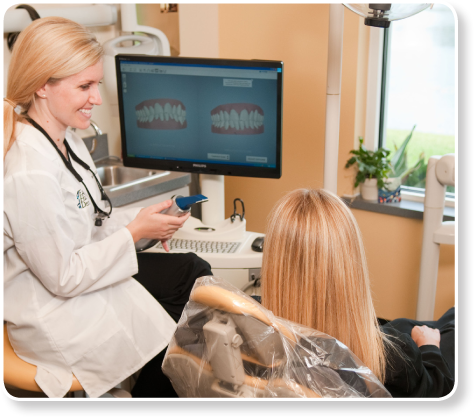The Benefits of Getting Braces When You are Still Young
Jun 30, 2021

Most people in the United States get braces when they’re children, typically between the ages of 8 and 14. But why do so many people get braces at such a young age? What are the benefits of getting braces as a child?
In younger children, braces are often done in two stages. The first stage is an early intervention that can be done as young as 6 years old. This early treatment is usually called interceptive treatment. Then later, a set of normal braces can straighten teeth at an older age.
Braces Make More Space for Adult Teeth
Children’s mouths are still developing and braces at an early stage can help to ensure that there’s room for adult teeth to come in. Adult teeth are larger than baby teeth. If a child’s mouth hasn’t yet grown to accommodate these adult teeth, the teeth may grow in crooked. Interceptive treatment can help to prevent crookedness, to begin with, so that later correction may not be necessary.
Braces Reduce the Risk of Chipping
If adult teeth come in crooked, there’s a greater chance of a tooth protruding. Protruding teeth are less protected by the lips and are more likely to be chipped or damaged if the child falls or the tooth is knocked. Early braces can help to create more space in the mouth so adult teeth don’t come in protruding.
Braces Can Reduce Speech Issues
If a child has an over or underbite, they may not be able to place their tongue correctly when they speak. This can create a whistling sound during speech or other difficulties pronouncing certain sounds. Interceptive treatment can help to prevent this from happening.
Braces Can Improve the Symmetry of the Face
Because interceptive braces can prevent adult teeth from coming in crooked or protruding, they can also help keep the face symmetrical. Braces help to improve the alignment of the jaws and teeth as well as prevent an overbite or underbite. Children may also feel self-conscious if their faces aren’t symmetrical, so braces improving that symmetry can also help to boost a child’s self-confidence.
Interceptive Treatment Can Help to Reduce Time with Later Braces
Braces in the interceptive treatment are phase I of a child’s orthodontal treatment. By having the early stage of braces when a child is younger, the overall time needed for braces in phase II can be reduced. This is because teeth that may have come in crooked without the interceptive treatment can instead grow straight.
How Do I Know if My Child Needs Interceptive Treatment?
It’s always a good idea to speak to your dentist about orthodontics. Your dentist can recommend an orthodontist as needed and can advise you on whether or not your child may need braces. If your child has oral problems such as an overbite or misaligned teeth, you’ll want to have those corrected as early as possible.
For informational purposes only.











